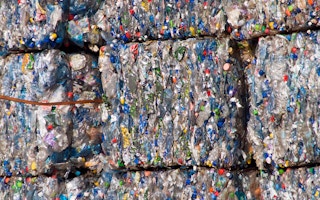New grants from the NSW Environment Protection Agency designed to reduce waste to landfill have already created new jobs, with one of the grant recipients, Resource Recovery Australia, employing four new project staff to deliver projects in Northern and Southern New South Wales.
RRA received two grants under the Industrial Ecology Business Network program: $362,225 for projects across Wollongong, South East and South Coast; and $270,600 for projects between Forster Tuncurry and Tweed Heads.
RRA manager Liz Stubbs told The Fifth Estate the purpose of the grants is to develop business-to-business waste recovery networks that enable the waste of one enterprise to become a direct input of another.
- See our article Martin Blake: into the blue economy
The resource streams RRA will initially focus on are organic waste, timber, plastics, glass and cardboard. An initial scoping and stakeholder engagement stage is now underway to establish barriers to the recycling of these materials in each local government area, and to ascertain which companies and institutions are large volume waste producers and which processors or re-users can make use of that waste.
The goal is to initiate a business to business network within the regions that will then be activated through a number of specific projects.
“
There is a huge untapped potential for businesses to improve recycling in NSW and this funding is very much targeted at making it as easy as possible for businesses to do that
Steve Beaman, NSW EPA director of waste and resource recovery
“It’s really exciting to be able to start putting together opportunities for businesses to reuse another business’s waste to create product,” Ms Stubbs told The Fifth Estate.
“We are like the legs on the ground for medium and large businesses which possibly do not have the internal resources to do this kind of network building for themselves.”
Ms Stubbs said the aim of the initial grant-funded activity is to divert 6000 tonnes of waste from landfill in the north coast region and 8000 tonnes in the south coast region by April 2015.
The organisation has already identified a number of enterprises in the organics sector that could be involved, including two south coast enterprises, Soil Co and Green Connect, which have the capacity to increase their uptake of waste for the manufacture of organic compost-based products.
In the north, timber pallets are a resource stream in which the initial scoping is already showing promise, for example through shredding of waste pallets to manufacture animal bedding for chicken farming operations and stables.
A Division of Great Lakes Community Resources, RRA is a profit-for-purpose social enterprise specifically focused on job creation for persons with a disadvantage, including Aboriginal offenders and those under Community Service Orders. For this reason, Ms Stubbs said the focus is on resource recovery techniques that are labour intensive rather than high technology.
“There is an element of economic development with these projects which can scale up local enterprise,” she said.
“We see ourselves as having a specialised approach which brings together our waste management expertise with the opportunity to create jobs and businesses in regional areas. It’s a matter of understanding how you bring people into jobs, and keep them in jobs.”
From waste to resource
EPA director of waste and resource recovery Steve Beaman said that by funding the establishment of networks that bring medium to large businesses together to identify new ways to recycle waste, the EPA hoped to reduce the amount of waste sent to landfill.
“These networks will help companies recycle their waste product among themselves by identifying one person’s waste as another’s raw resource rather than sending it to landfill,” Mr Beaman said.
“That could include recovering food manufacturing waste for reuse or finding ways to recycle the metals, timber and glass from office fitouts.
“It is estimated that up to 70 per cent of waste that businesses send to landfill could be recycled, saving money in disposal costs, making better use of valuable resources and helping the environment.
“There is a huge untapped potential for businesses to improve recycling in NSW and this funding is very much targeted at making it as easy as possible for businesses to do that.
“This is an exciting new area of waste management and resource recovery which benefits the business bottom line, turns waste into a resource and supports our ultimate goal of keeping waste out of landfill.”
Four other organisations also received grants under the Industrial Ecology Business Networks Grants: $283,000 went to Edge Environment for projects in the Sydney Metropolitan area; $353,000 to WildBlue Global Consulting for projects in the Central Coast, Newcastle and Hunter regions; $233,140 to Skillset for projects across the Central West, North West and Northern region; and $122,000 to Mike Ritchie and Associates for projects in the Murray and Murrumbidgee regions.
The grants are part of the NSW Government’s Waste Less, Recycle More initiative, a five year $465.7 million package that includes funding for food and garden waste collections, market development, managing problem wastes, new waste infrastructure, local councils and programs to tackle illegal dumping and litter.
The second round of grants across all categories commences in August 2014.
The post Industrial ecology grants creating circular economy opportunities appeared first on The Fifth Estate.

















